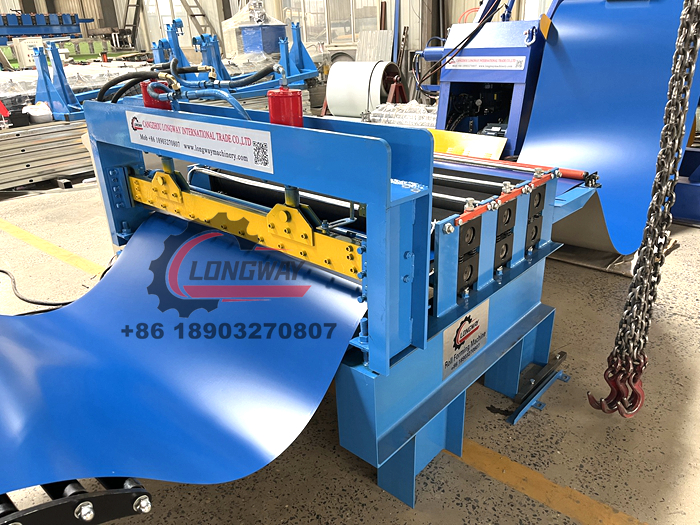Box Profile Sheets Roll Forming Equipment for Efficient Manufacturing Solutions
Understanding Box Profile Sheets and Their Roll Forming Machines
In the realm of modern construction and manufacturing, box profile sheets are becoming increasingly popular due to their versatility, durability, and aesthetic appeal. These sheets are typically made from metal and have a distinctive box-like ribbed design, which not only enhances structural integrity but also allows for efficient drainage of water. Understanding the process behind creating these sheets, particularly through the use of roll forming machines, is essential for manufacturers and builders alike.
What Are Box Profile Sheets?
Box profile sheets are a type of metal sheeting that features a specific ribbed configuration, usually resembling a square or rectangular box. They are primarily used in roofing and cladding applications, making them ideal for industrial buildings, warehouses, agricultural facilities, and even residential applications. The unique design of box profile sheets provides several advantages, including enhanced strength, reduced weight, and ease of installation.
These sheets are commonly made from materials such as galvanized steel, aluminum, or even composite materials. The choice of material often depends on the intended use, environmental conditions, and aesthetic requirements of the building project. The durability of box profile sheets makes them an excellent choice for long-term applications.
The Role of Roll Forming Machines
The production of box profile sheets is achieved through a process known as roll forming, which involves feeding a long strip of metal into a series of rollers that progressively shape the material into the desired profile. Roll forming machines are meticulously designed to create various profiles efficiently and accurately, ensuring a consistent product.
1. Design and Configuration The first step in the roll forming process is the design of the roller dies, which determine the final shape of the box profile sheet. Manufacturers often customize these dies based on specific project requirements or standard profiles.
2. Material Feeding Once the dies are configured, a continuous strip of metal is fed into the machine. The metal is usually pre-treated to enhance adhesion and corrosion resistance.
box profile sheets roll forming machine

3. Shaping Process As the strip moves through the roll forming machine, it passes through multiple sets of rollers. Each set gradually modifies the shape of the metal until it reaches its final box profile. The precision of the rollers is crucial as even minor discrepancies can lead to defects in the final product.
4. Cutting and Finishing After the metal is formed into the desired profile, it is cut to the specified length. This step often includes additional finishing processes, such as painting or surface treatment, to enhance durability and aesthetics.
Advantages of Using Roll Forming for Box Profile Sheets
1. Efficiency Roll forming machines operate continuously, allowing for high production rates with minimal waste. This efficiency is particularly important in large-scale manufacturing operations.
2. Consistency The automated nature of roll forming ensures that each sheet produced is uniform in size and shape, which is essential for structural integrity and appearance.
3. Customization Roll forming technology allows for easy customization of profiles, lengths, and finishes, catering to specific client needs or industry standards.
4. Cost-Effectiveness The use of roll forming can significantly reduce labor costs and time, making it a cost-effective solution for producing box profile sheets.
Conclusion
Box profile sheets play a vital role in construction and manufacturing, offering strength and versatility. The roll forming process not only streamlines the production of these sheets but also enhances their quality and consistency. As the demand for efficient and durable building materials continues to grow, understanding the intricacies of box profile sheets and the machinery used to create them will be essential for those working in the industry.
-
Roof Panel Machines: Buying Guide, Types, and PricingNewsJul.04, 2025
-
Purlin Machines: Types, Features, and Pricing GuideNewsJul.04, 2025
-
Metal Embossing Machines: Types, Applications, and Buying GuideNewsJul.04, 2025
-
Gutter Machines: Features, Types, and Cost BreakdownNewsJul.04, 2025
-
Cut to Length Line: Overview, Equipment, and Buying GuideNewsJul.04, 2025
-
Auto Stacker: Features, Applications, and Cost BreakdownNewsJul.04, 2025
-
Top Drywall Profile Machine Models for SaleNewsJun.05, 2025








